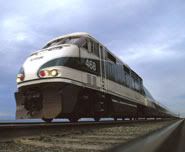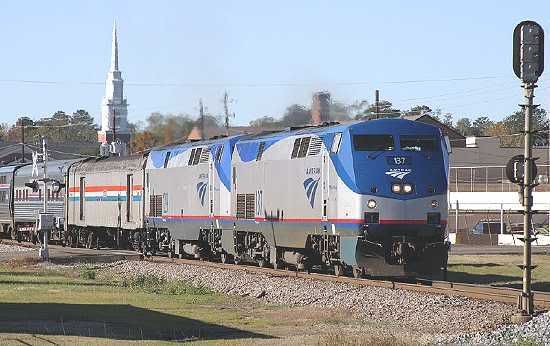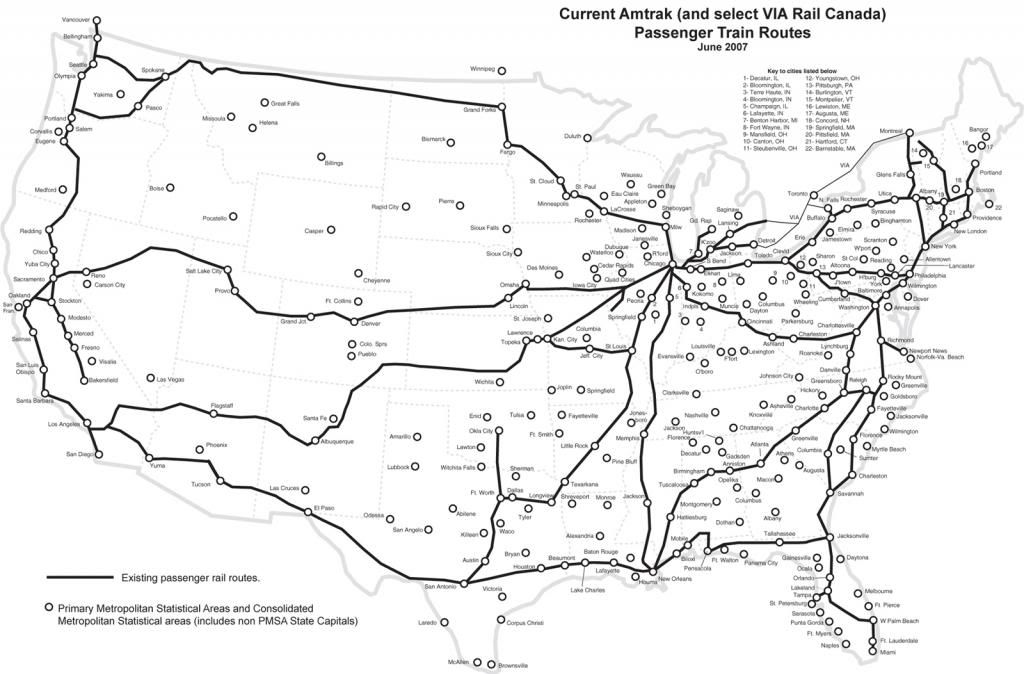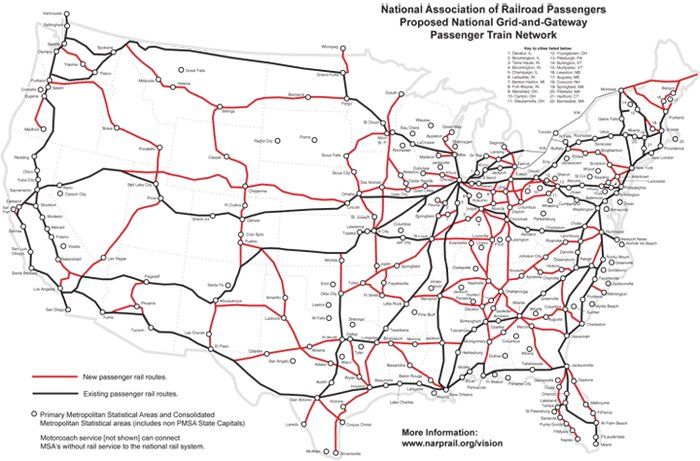(2 pm. – promoted by ek hornbeck)
cross-posted from Voices on the Square
 Congressman John Mica, Republican from the Florida 7th district and member (former chair) of the House Committee on Transportation and Infrastructure, has been on the attack against Amtrak again. During the testimony to the committee by John Robert Smith, head of Transportation for America and Reconnecting America, and former Republican mayor of Meridian, Mississippi, faced aggressive questioning by Congressman Mica promoting his desired defunding of Amtrak:
Congressman John Mica, Republican from the Florida 7th district and member (former chair) of the House Committee on Transportation and Infrastructure, has been on the attack against Amtrak again. During the testimony to the committee by John Robert Smith, head of Transportation for America and Reconnecting America, and former Republican mayor of Meridian, Mississippi, faced aggressive questioning by Congressman Mica promoting his desired defunding of Amtrak:
… But Mica spared his real invective for the next part, where he let Smith know he’s seen “your little memo that you sent to my mayor.” Something about the belittling, eyes-in-the-back-of-my-head tone there was just chilling, like he’s saying he found the love notes Smith was writing to his wife. “House of Representatives slash Amtrak funding, putting the future of the national system in jeopardy!” Mica read the line in a high-pitched tone, mocking the hysteria Smith was clearly exhibiting when calling Winter Park Mayor Ken Bradley’s attention to the House cuts.
Does Smith really think a cut of $1.4 billion to $950 million is such a big deal? Well, yeah, actually. “Don’t you think the United States is under threat when you’re in debt up to your eyeballs, when you’re borrowing 40 cents on the dollar to underwrite your service?” Mica exploded. “You’re aware that every ticket on Amtrak last year was underwritten more than $40 per passenger ticket? You’re aware of that?”
…
Mica railed against Amtrak’s “Soviet-style operations” and the money losses on food service aboard the trains and asked Smith if he should “go back and tell that mother [of the soldier not getting hot breakfasts], ‘You know, we need to put this money into Amtrak; we can’t take any cuts out of Amtrak.'”
To which John Robert Smith firmly replied: “That’s a false choice, Congressman.”
Indeed, you don’t have to take the word of DC Streetsblog about the exchange, as it has been put up on youtube:
Congressman Mica is Lying
 Of course, Congressman Mica is lying, on many points. He tries to argue that Amtrak is paying for gourmet food while US troops are having their hot meals cut due to budget cuts, which Snopes identifies as a lie:
Of course, Congressman Mica is lying, on many points. He tries to argue that Amtrak is paying for gourmet food while US troops are having their hot meals cut due to budget cuts, which Snopes identifies as a lie:
Chow Down
Claim: Due to budget cuts, US troops deployed overseas are no longer provided with breakfast.
Mixture
False: Budget cuts have eliminated breakfast for US troops deployed overseas.
True: Hot Breakfasts have been replaced by MRE for troops at some military bases in Afghanistan that are transitioning to local control.
And of course, while Congressman Mica seems to be trying to turn this Amtrak program into a lying email chain letter similar to the lie email chain letter lie about budget cuts denying US troops overseas a hot breakfast, the program itself is quite sensible:
Douglas was joined in Wilmington in March by the likes of Michel Richard, the charming French master behind District hot spot Central, and Sara Jenkins, whose rustic Italian cooking has made her East Village restaurants Porchetta and Porsena must-gos. Amtrak’s culinary campaign is fueled by the rail service’s goal of becoming more self-sustaining and by the demands of customers who live, breathe and drink in a culture that has turned everyone into a connoisseur.
But even the most talented chefs admit that improving Amtrak’s food offerings can be an uphill climb. Like airlines back in the days when they actually offered meals to everyone, trains face particular logistical challenges. There is limited equipment and storage space, and items must be able to endure the sometimes bumpy ride.
This is the classic one-two attack of criticizing Amtrak for not breaking even on food service on all routes and criticizing efforts Amtrak is making to develop better value for money offerings given their supply and equipment limitations to come closer to breaking even.
However, the Great Amtrak Food controversy was just the opening number, trotting out a tune from the latest album, and then Congressman Mica delves into his greatest hits of deception, distractions and outright lies.
NARP Counter-Attacks Mica’s Attacks
 The National Association of Railroad Passengers is, of course, familiar with Congressman Mica’s greatest hits, since Congressman Mica has been trotting many of them out for quite a long time now, and they’ve rebutted many of his claims:
The National Association of Railroad Passengers is, of course, familiar with Congressman Mica’s greatest hits, since Congressman Mica has been trotting many of them out for quite a long time now, and they’ve rebutted many of his claims:
1. In an exchange with Deputy Transportation Secretary John Porcari, Mica asked whether or not the Deputy Secretary was prepared to “open Amtrak’s monopoly” to private enterprise.
Amtrak does not possess a monopoly over passenger rail service. Were this the case, then it would be impossible for All Aboard Florida (an enterprise which Mica has endorsed!) to offer proposed intercity passenger service alongside Amtrak between Miami and Orlando. Commuter rail contracts all over the country have been seized by foreign interests like Veolia, and even by Class 1 Freight railroads such as BNSF and Union Pacific. Simply stated, Amtrak’s “monopoly” represents nothing more than the reality that significant barriers to entry exist for any potential passenger rail operator, particularly in terms of capital costs. Yet for those who are willing, as All Aboard Florida demonstrates, the market can be accessed by both Amtrak and private companies alike. Any notion of an Amtrak “monopoly” rests on a very liberal use of the term.
The fact is that when the railroads were first gaining their rights of way, the desire for passenger rail service was a major bargaining lever that they relied on heavily to get the routes they needed. When railways attract state and federal regulation of railroad behavior in response to frequent and substantial abuses of market power, obligations to provide passenger rail service were part of the regulatory requirements. When Amtrak was formed, they were relieved of this regulatory burden in exchange for agreeing to grant Amtrak trains priority over the passenger service corridors they were once required to serve.
So there is no monopoly at all. Any company that can get passenger rail transport up and running, in compliance with the same regulations that Amtrak must comply with, can do so. Rather, there are freight railroads who have received a benefit from one side of a bargain for half a century and would like to continue to receive that benefit while reneging on the other side.
2. Mica claims that Amtrak’s long-distance operations suffer because of the railroad’s supposed inability to manage its own schedule in coordination with the freight railroads. “The long-distance services are a joke. … I would get the private sector to compete for them, and I would look at redoing the schedules. They don’t have to fly like planes every day. Airlines adjust their schedule. Amtrak can’t.”
Here, the Congressman again misunderstands the problem and unfairly blames Amtrak for something it cannot effectively control. There are many issues that inhibit Amtrak from running its trains as reliably as it could over host freight railroads’ tracks… These include the fact that so much of the railroad network is single-track (leaving dispatchers with little flexibility to be able to move trains around each other), and that most freight trains are long, heavy and slow whereas passenger trains are relatively short, light and fast. Nevertheless, some host railroads dispatch their trains in such a way that causes unnecessary delay to Amtrak trains, and these delays can be ameliorated through more effective enforcement of Amtrak’s statutory right to dispatching priority.
As Frank Wilner explained in a recent Railway Age editorial , Amtrak’s statutory right to dispatching priority has no real enforcement mechanism apart from deductions in user fee payments Amtrak makes to the host railroads. … The D.C. Circuit Court of Appeals ruled that the federal government acted improperly in delegating that authority to Amtrak, invalidating the existing metrics.
If the Congressman is so concerned about Amtrak’s seeming inability to operate its long-distance services on time, he should advocate for Congress to create new case-by-case metrics. … Given railroading’s high fixed costs-meaning that each additional passenger means additional revenue but only adds minimally to the cost of providing service-the way to improve long-distance trains’ performance is to expand service by adding frequencies and adding cars to existing trains, not shrinking it.
Indeed, under the requirements of the previous Federal Railway Authority authorization, the worst performing long distance railway corridors were studied for ways to improve their performance. The worst performing routes where three-times-a-week routes, which could have their operating revenue per dollar operating cost substantially improved by being upgraded to once a day routes.
Those would have resulted in a reduction in operating subsidy per rider, which Congressman Mica complains about. But improving financial performance would have required up-front investment that Congress was unwilling to provide. Evidently, the subsidies are not a problem to be solved, but rather a weapon to be used to attack Amtrak.
3. In his remarkably heated exchange with Reconnecting America’s CEO John Robert Smith on Amtrak subsidies, Mica implicitly contended that there is absolutely no government subsidy for Virgin Trains, the Richard Branson-owned service between London and Edinburgh. When Smith countered that Mica was forgetting about subsidized capital costs, Mica verbally bludgeoned him in the hearing, raising the tone of his voice to a decidedly outdoor level: “That’s not true! Don’t tell me that! I’ve been over there; I’ve seen it; I’ve met with the people.”
Smith was, of course, entirely correct. Virgin Trains, like all other operators of passenger rail in Britain, use tracks that are owned and maintained by Network Rail, which itself is de facto owned by the British Ministry of Transport, and all costs of which are underwritten by the government. According to The Guardian newspaper, Network Rail received £3.9 billion ($5.83 billion) from the British government for the most recent fiscal year. Additionally, The Guardian, citing a Manchester University study, reports that Virgin Trains received a total direct subsidy of £2.79 billion ($4.17 billion) from 1997 to 2012.
The Hypocrisy of Congressman Mica
 The NARP saves their best for last. And that is that rail projects that Congressman Mica supports could not stand up against the explicit and implied standards that Congressman Mica sets for shutting down Amtrak:
The NARP saves their best for last. And that is that rail projects that Congressman Mica supports could not stand up against the explicit and implied standards that Congressman Mica sets for shutting down Amtrak:
4. Taken together, Mica’s statements suggest an intractable opposition to intercity passenger rail that makes no room for the realities faced by Amtrak and other operators.
But, as a matter of fact, the Congressman has been a strong supporter of rail in his own district. In addition to heartily endorsing All Aboard Florida, Mica has also been a chief proponent of the SunRailcommuter rail system in the greater Orlando area, saying that “it just makes sense.”
If you were to apply the simplistic metrics that Mica favorsfor Amtrak-total passengers divided by total budget-SunRail does not fare well; with $1.2 billion (slightly more than Amtrak’s annual budget) going to construct a system that is expected to carry almost 1.1 million trips a year (4,300 trips per business day times 250 business days per year), compared to Amtrak’s 31.2 million passengers in fiscal year 2012.
However, the city of Orlando does not subscribe to Mica’s math; its leaders, charged with the stewardship of the local economy and infrastructure, can’t afford to. They see the growth that connecting people with job markets will lead to; the real estate development that the stations will spur; the improved quality of life that rail transit fosters; and the construction jobs that will be created building all of this. Even in austere times, cities must invest in infrastructure to keep their economies growing.
And that is just rail: while Congressman Mica has been campaigning to shut down Amtrak, he has not been campaigning to shut down either Federal subsidies for air travel, or Federal subsidies for motor vehicle transport.
This blatant hypocrisy does complicate the understanding of Congressman Mica’s campaign to kill Amtrak.
This is, after all, not simply a matter of a servile puppet of Big Oil and the network of anti-rail propaganda that they fund in the Heritage, Cato and Reason liebertarian propaganda mills. After all, a slavish servant of Big Oil would support neither All Aboard Florida, a private regional passenger rail service which seems to be in support of real estate property development, nor the local rail service offered by Sunrail.
Similarly, Amtrak is not a primary threat to the interlocking vested interests in the sprawl property development. Those vested interests are more directly confronted by the threat of local rail transport and particularly private regional rail transport in pursuit of infill property development. Ohio’s Hedge Fund Governor and his decision to give back $400m in Federal Funds to start the Ohio Hub, Wisconsin’s Koch Brothers Governor and his decision to give back $800m in Federal Funds to extend the Chicago/Milwaukee corridor at 110mph to Madison were both influenced by this lobby, but both of those were regional intercity corridors, similar to the All Aboard Florida corridor that Mica supports.
Those two interest groups are dogged opponents of allowing the country the freedom to choose the benefits of more effective rail transport. When we look at Congressman Mica, there appears to be more going on here.
What About Amtrak Does Congressman Mica Want to Scrap?
 While Congressman Mica’s recent attacks on Amtrak did not include a preferred alternative, from his time as Chair of the committee we can see his preferred system:
While Congressman Mica’s recent attacks on Amtrak did not include a preferred alternative, from his time as Chair of the committee we can see his preferred system:
GOP unveils plan to privatize Amtrak
…
The high-speed rail envisioned by Mica would provide faster service for passengers traveling to locations between Washington and Boston than the Acela line operated by Amtrak. The proposal would remove Amtrak from control of the federally-designated northeast rail corridor and transfer it to the Department of Transportation. A newly-created Northeast Corridor Executive Committee would oversee bidding process for rail projects in the northeast. …
[Ranking Democrat of West Virginia, Nick] Rahall called the privatization plan, which Mica is co-sponsoring with Rep. Bill Shuster (R-Pa.), “a death knell for passenger rail service from coast to coast.
“Privatizing this profitable corridor will not merely affect train service in that region; it will have a devastating domino effect from coast to coast, leaving trains stuck at the station across the Nation,” Rahall said. “The Auto Train, Capitol Limited, California Zephyr, Cardinal, Coast Starlight, Empire Builder, Palmetto and Silver Service, Texas Eagle and so many other vital lifelines will no longer serve as engines of economic growth but will be mere relics of a bygone era.” …
Mica added that private rail service in the Northeast could become profitable enough to subsidize private-public partnership in other parts of the country where Amtrak is currently losing money as the sole provider of rail service.
“We think the Northeast will be the cash cow and we can pour that money back in to some of those that want commuter rail improvements,” he said.
Amtrak is a system made up of three main parts. First is the high frequency, electrified, Northeast corridor including the Acela services and Northeast Regional services that combine to deliver an operating surplus, but which have struggled for decades with the originally promised and never delivered funds required to bring the entire Northeast Corridor up to a state of good repair. Second are the regional rail corridors operated by Amtrak which were part of the hand-over of legacy private passenger rail service, with Amtrak essentially acting as the franchise operators of operations subsidized by state governments, often with equipment owned by those state governments. Third are the long distance networks, operating under the legacy Amtrak priority and primarily serving to provide access to large metropolitan areas from small towns and rural areas.
Amtrak therefore crosses over the partisan divide between largely Democratic large metropolitan areas and largely Republican small towns and rural areas, providing service to Baltimore, Philadelphia, NYC, Connecticut, Providence and Boston but also to Fargo, North Dakota; Salt Lake City, Nevada; Topeka, Kansas; Texarkana, Arkansas; Jackson Mississippi; and Greenville, South Carolina.
This is the source of Amtrak’s ability to survive so long in the face of so many efforts to kill it. The foundation of the support for the system is the US Senate, where the combination of services provided ensures support from both all of the states of the Northeastern Corridor but also from some of the Senators from some of the states like West Virginia, North Dakota, Utah and Arkansas. And this is not this is not support that can be stolen by the control fraud of partisan gerrymandering,
And Mica’s strategy seems clear enough. Promise higher speed and higher quality service by privatizing operations on the Northeast Corridor. Promise to roll surpluses from the government ownership of the Northeast Corridor into development of local rail service. Amtrak can continue to function as a franchise operator for state subsidized intercity rail service, but the long distance rail services, politically isolated, providing important transport services to small town and rural areas without large House representation and very marginal service in the large metropolitan areas outside the Northeast Corridor, including the bulk of Republican Representatives in exurban and outer suburban areas.
The direct attack is not on the Democratically-heavy Northeast. That is not to say that they would benefit. Mica’s proposal represented a promise to upgrade and improve in return for a more exposed political position, and if Northeastern Democrats had been foolish enough to fall for the promise, they well have found the promised upgrades to be the next “outrageous government subsidies” in the line of fire.
However, the up front attack was on the Republicans of small towns and rural areas that support Amtrak as a vital transportation service on their areas. Indeed, this explains why Congressman Mica brought out the greatest hits of his deceptions, distractions and lies about Amtrak when faced with a small city / small town town, local Chamber of Commerce type supporter of Amtrak.
In Mica’s legislation, its not the “other party” that gets the worst end of the bargain … its those in his own party who vote their own local interests in support of Amtrak.
The Threat of the Existence of Amtrak
 I can see the difference the existence of Amtrak in its current form makes in the context of my Steel Interstate proposal.
I can see the difference the existence of Amtrak in its current form makes in the context of my Steel Interstate proposal.
Absent an existing network of intercity transport, a group of states or a private operator could definitely establish specific services along Steel Interstate routes. The investment in infrastructure to allow 60mph heavy freight and 90mph rapid freight to compete for speed sensitive freight and time-of-day sensitive freight would provide a system upon which 110mph electric passenger trains could run with far fewer delays, so with stronger demand, and with much better average transit speed, so both stronger demand and lower operating cost per mile.
It could well be that much of the Steel Interstate system would gain such services. Perhaps not all, however, since the Steel Interstates corridors would be laid out in service of long distance freight, which often means bypassing larger cities with freight destined to those cities leaving the Steel Interstate on conventional freight rail corridors.
Contrast this to the situation with Amtrak in existence in its current state. Amtrak would be able to immediately establish new routes along the Steel Interstate corridors, wherever the equipment cost could be readily financed by expected surpluses on operating revenues over operating costs. But, in addition, existing long haul routes that can use a portion of a Steel Interstate would gain similar improvements to operating performance and so improve their operating revenues per dollar operating cost.
Most important, however, is the interaction between the new routes and the existing route system. Where the new routes intersect the existing route system, they create new demand for travel on the existing route system, increase the operating revenues per dollar operating cost if Amtrak can find the equipment to cater to that new demand. That equipment would be freed up by the corridors where the new routes divert longer distance traffic from the existing route system, shipping sleeper traffic onto the Steel Interstates and turning the existing route into a regional feeder route system.
And the more effective the transport provided along the Steel Interstates, the greater the political demand for more regional intercity feeder systems to connect onto the Steel Interstates, flipping the politics from a fight over defense of the current system into a fight over who gets the first dibs on the expansion of the current system.
Without an existing skeleton system in place, we can fight for the same service improvements, but the fight is much easier with a current institution in place than if we have to rebuild those institutions from scratch.
High Speed Rail corridors offers a similar dynamic. As the California High Speed Rail network is built up, it means that the Sunset Limited route into Los Angeles will provide a substantially more effective connection from Arizona and New Mexico into Northern California, and the Zephyr into Oakland will provide substantially more effective connections from Reno and Salt Lake City into Southern California. However, while this will be an appreciable increase in long distance rail patronage, it will only be a very small share of total High Speed Rail traffic, while the focus of the California regional corridors will be on connecting California residents into the network, rather than on the provision of interstate passenger rail transport.
The real danger posed by Amtrak to defenders of the current Climate Suicide intercity transport system is not the present skeleton long distance transportation network. The real danger is the way that it can serve as a kernel upon which a substantially more useful intercity rail transport system can be established.
And it will continue to present this danger so long as the current system remains in place, with its cross-party service to the interests of both Northeastern Democrats and small town and rural Republicans of the Southeast, Great Plains and Mountain West. The current long distance system is most important as a kernel from which future operations can grow, and it is that cross-party service that has acted as the protective husk around that kernel.
Conversations, Considerations and Contemplations
As always, the Sunday Train does not end with a conclusion, but rather with a call to all the passengers of this Sunday’s ride to get involved in the conversation.
Feel free to address the topic of this week’s Sunday Train, but also feel free to start conversation on any other issue, question or current event related to Sustainable Transport and Sustainable Energy Production.

1 comments
Author
… There’ll Be Food on the Table Tonight.